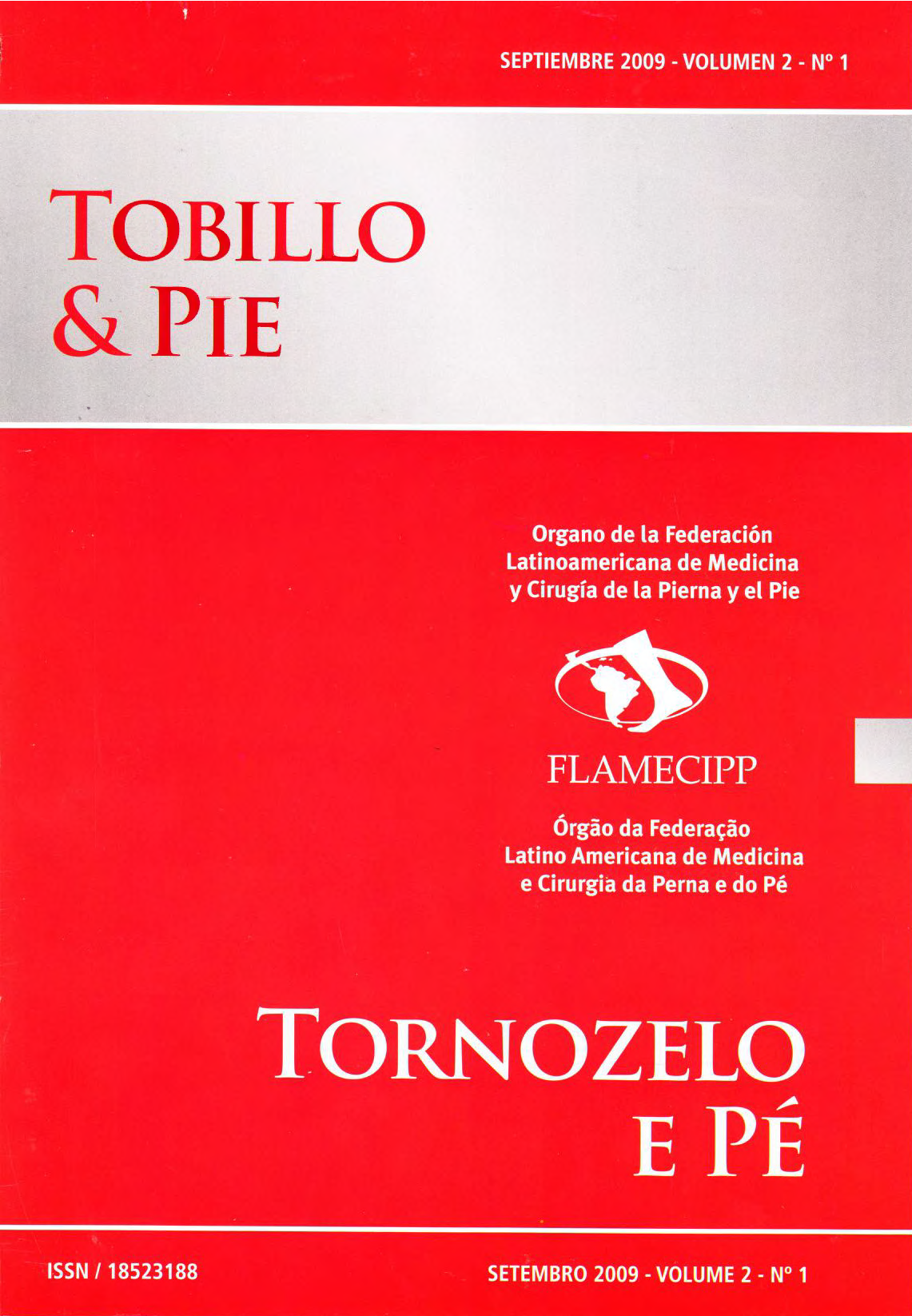Resultados clínico-podométricos del tratamiento de las fracturas de calcáneo
Keywords:
Calcaneal fracture, treatmentAbstract
Introduction: The purpose of th is study is to a na lyse the results (function, radiological changes and footprint) of patients whounderwent treatment for calcaneal fractures. Material and Methods: We present a retrospective study of (67 patients 0 a cases) with calcaneal fractures who underwent treatment between 1999 and 2005. The mean follow-up was 43 months (to-so).Eighty-four percent of patients were men and 44% were you nger than 40 years. Seventy-four percent of fractures were intra-articular. The results had been evaluated according to Creighton Nebraska scale, X-ray (Bohler angle before and after treatment) and in 25olo of patients a footprint could be done to a na lyse cha nges when com pa ring with contra latera I foot. Results: We observed a mean score of 75.8 points (ranged 35 to 98). The Iowest mean score was seen in the intra-articular group treated conservatively. Boh ler a ng le was less affected when fractu re had been treated operatively. Main complication after intra-articular fracture was pain due to osteoarthritis (13 cases). In these cases, Bohler mean angle was lesser than the global series. Smoking, diabetes and open fractures increase the risk of soft tissue complications. ln the footprint, a mean widening of 3.09 millimetres had been measured. Additionally, in eight cases, sole flattening has been seen after the calcanea Ifractures. Conclusion: We obtained similar results than other authors. Final Bohler angle and intra-articular pattern are important prognostic factors. Footprint analysis is an adjuvant method of postoperative assessment of patients who sustained calcaneal fractures.


